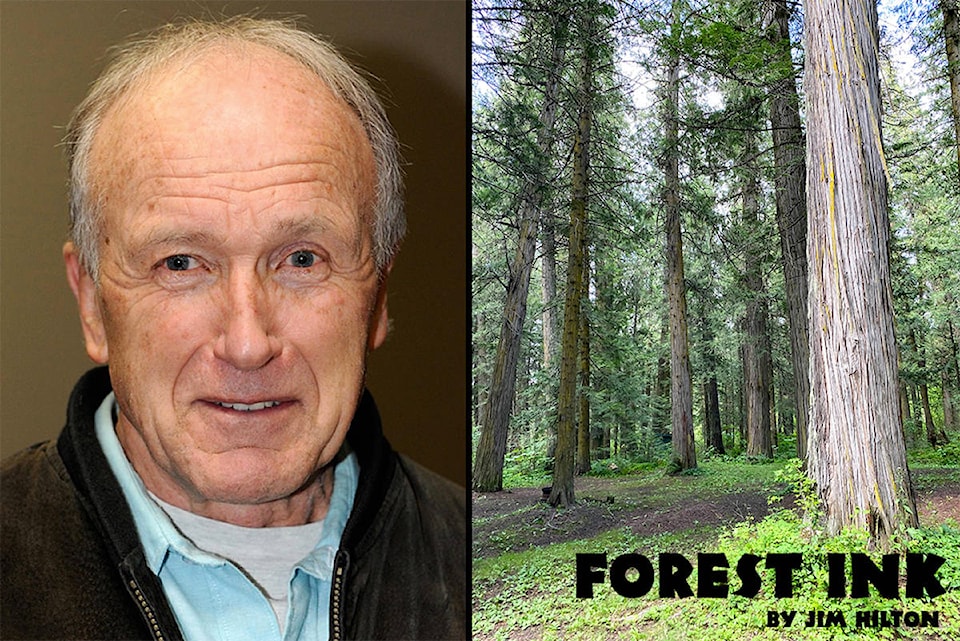I first heard of the government’s forest intentions paper through the Community Forest (CF) newsletter.
The 28-page report has a lengthy title: Intentions Paper - Modernizing Forest Policy - Setting the Intention and Leading Forest Sector Transition.
As described in the CF newsletter “the paper articulates government’s vision for policy change in the next three years, and focuses on reconciliation with Indigenous peoples, diversifying the forest sector and providing more support and opportunities for communities. The Intentions Paper is painting a vision and the details of how it will be achieved will come through engagement. It is well understood that it will be a massive undertaking to implement and will take time. Some highlights of the report include:
READ MORE: Several Quesnel area governments work toward forming community forest agreement
• Concrete commitment to get more volume to First Nations.
• Changes that will support communities and local values, rather than corporate values.
• An expectation of more Business to Business (B2B) relationships with large tenure holders to increase the participation of First Nations.
• Implementation of the 14 recommendations in the Old Growth Strategic Review.
• The first step will be engagement with First Nations to see if the vision aligns with theirs. This engagement will occur in the next two months, however, the confirmation of unmarked graves in Residential Schools will impact the process.
Community forest members will continue to tell the story of the value and strengths of community forests, particularly how First Nations are participants in the CFA program and how the Community Forest Program is closely aligned with the vision articulated in the paper.
The paper starts with the importance of the forest industry. More than 50,000 British Columbians work directly in the forest industry. Many more benefit indirectly. Last year, forest products made up 29 per cent of B.C.’s total exports, equal to $11.5 billion. The paper describes how five key factors will be discussed. No. 1. Sustainability No. 2. Reconciliation No. 3. People and Communities No. 4. Competitiveness and No. 5. Fairness for British Columbians.
A discussion on the forest tenure system describes some of the changes needed.
While licensees require certainty to make business decisions, the government intends to ensure replaceable tenures demonstrate a clear commitment to sustainability and sound management.
So-called evergreen tenures, which must by law be renewed, date back to the 1960s, when considerations around Indigenous partnerships, forest sustainability and climate change were very different.
The criteria and expectations for tenure replacement will include licence performance on a range of public interest considerations as part of the replacement process. In essence the holders of replaceable tenures will be expected to find creative ways to partner and grow the industry, inclusive of Indigenous interests, while maintaining the long-term stability industry needs to thrive.
The paper also looked at increasing fibre access for value-added domestic manufacturers: The government intends to work with value-added sector representatives for traditional remanufacturing products, mass timber (glue laminated products made from traditional lumber), and with new entrants on innovative (including bioeconomy) products to understand what and where the province can act to support competitive value-added businesses.
This paper describes how BC Timber Sales and other legislation will be involved. Promoting the use of wood and mass timber will be done through the Wood First Act which requires wood to be used as a primary building material in public sector buildings (with limited exemptions). Government will be improving the legislative framework to ensure wood, mass timber and emerging biomass-based materials, such as biomaterials, are more clearly a priority in public buildings. This work will be promoted as part of B.C.’s mass timber action plan and CleanBC. The paper also deals with a topic that I have written about in the past regarding a process to minimize the burning of slash piles created after timber harvesting, so this fibre is available for manufacturing, and that reduced emissions benefit our climate as part of Clean BC.
Jim Hilton is a professional agrologist and forester who has lived and worked in the Cariboo Chilcotin for the past 40 years. Now retired, Hilton still volunteers his skills with local community forests organizations.
editor@wltribune.com
Like us on Facebook and follow us on Twitter
